
The new school year begins in Traverse City and the history of Pearl Nettie Buell (January 23, 1893- February 8, 1993) of Grand Traverse County demonstrates the sort of journey young people would take to become school teachers in the early twentieth century. The journey from student to teacher began in 1898 for Pearl Buell, age five, with her first day of school. Pearl and her older siblings (nine in total) all attended the Gunton School, the one-room schoolhouse in Garfield township, school district no. 3, located about a mile away from their farm.1
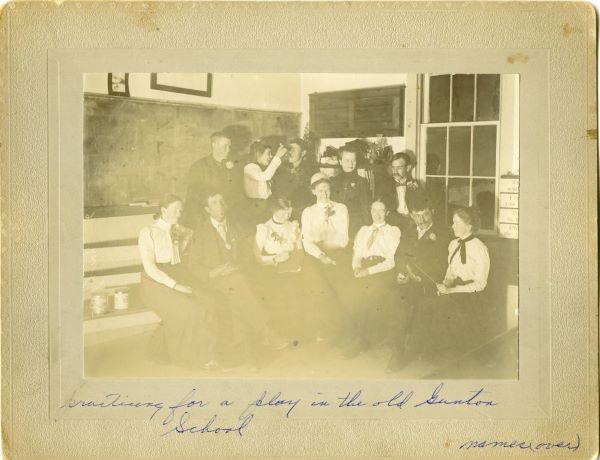
In the year 1904, 12 year old Pearl was attending the Gunton school along with twenty-nine other students of various ages.2 The average attendance for the school was 18 students, but Pearl Buell was among two other students that were neither absent nor tardy in the month of October.3 She and her sister, Daisy Buell, were also neither absent nor tardy in April 1905.4
After graduating from the eighth grade, Pearl furthered her education at the Traverse City High School starting in 1907, today’s Central Grade School (301 Seventh Street, Traverse City, Michigan).
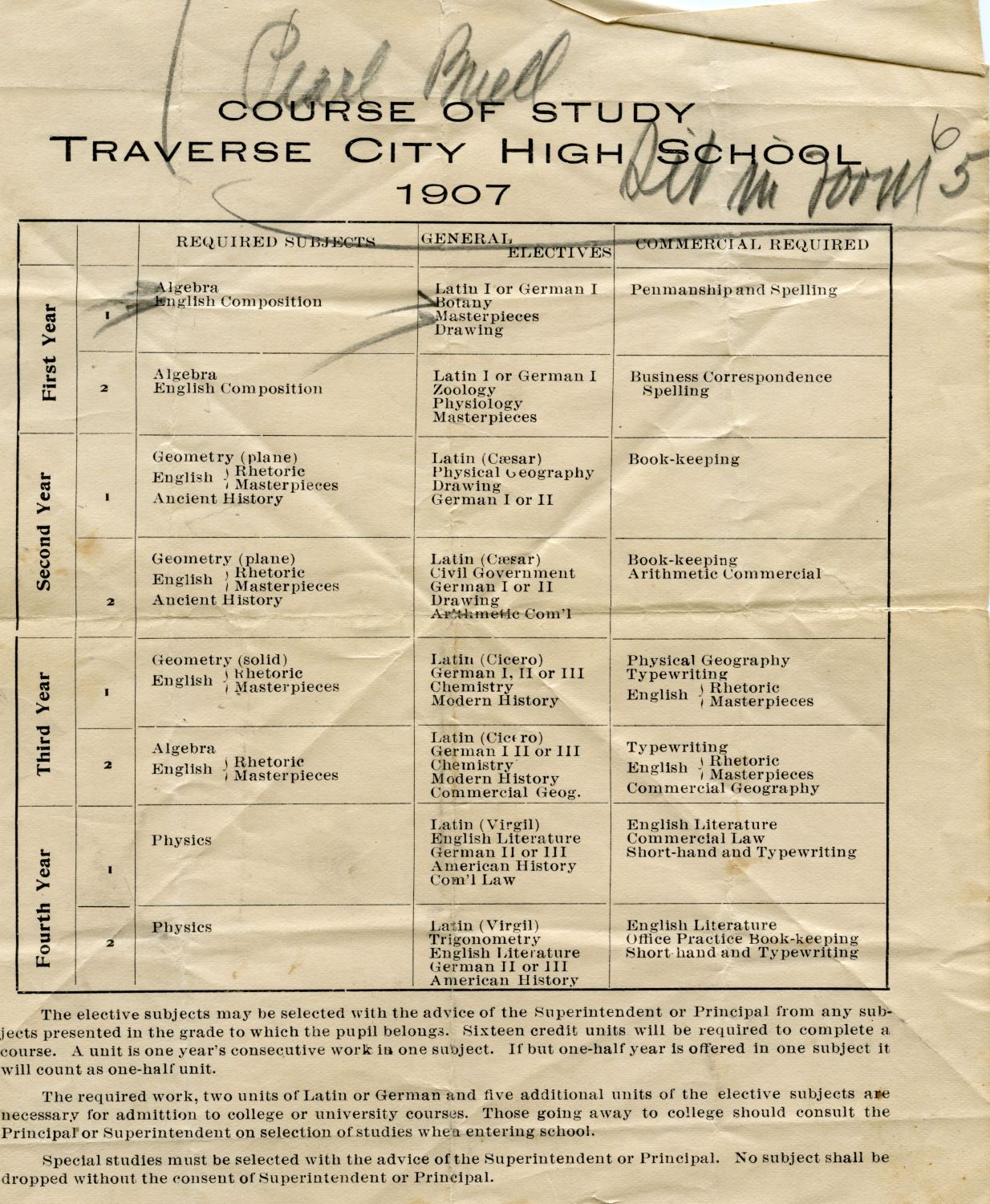
After graduating high school in 1911, Pearl took her county teachers examination at the Needham Business college, for a certificate to teach in the schools of Grand Traverse County. At the time there were three grades (or levels) of certificates granted to applicants determined by the State Superintendent of Public Instruction. The first-grade certificate was valid for four years and could only be granted to those who have taught for at least one year.5 The second allowed for a teacher to teach in the county for three years.6
Of the three grades, Pearl wrote for the third-grade examination, the lowest level of certification for teachers. Pearl along with few high school cohorts, took the examination on June 15, 1911.7 For the third-grade examination in 1911, test applicants in Traverse City had to prove their knowledge of writing, orthography, reading, grammar, arithmetic, geography, United States History, civil government, theory, and art and physiology.8
Having passed the examination, Pearl was certified to teach at the Rice School (2525 M37, S #16) in Blaire Township, where she reportedly earned a month salary of $35.00.9 At the end of her first year of teaching, Pearl gave out “Souvenirs” that included a picture of her face, sweet quotes, an illustrated poem, along with list of pupils and school officials.10
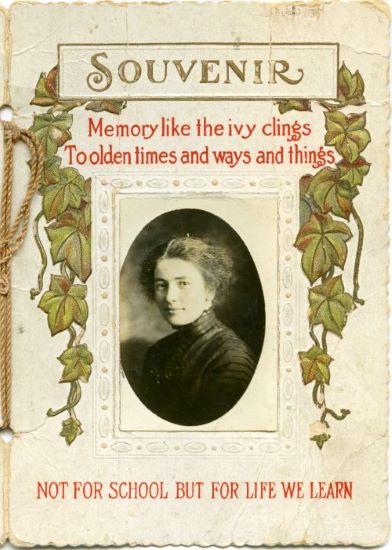
These “Souvenirs” appear in the LHC multiple times. Other “Souvenir” examples are from the East Bay Township schools, two from the Black School and one from the Potter's school.
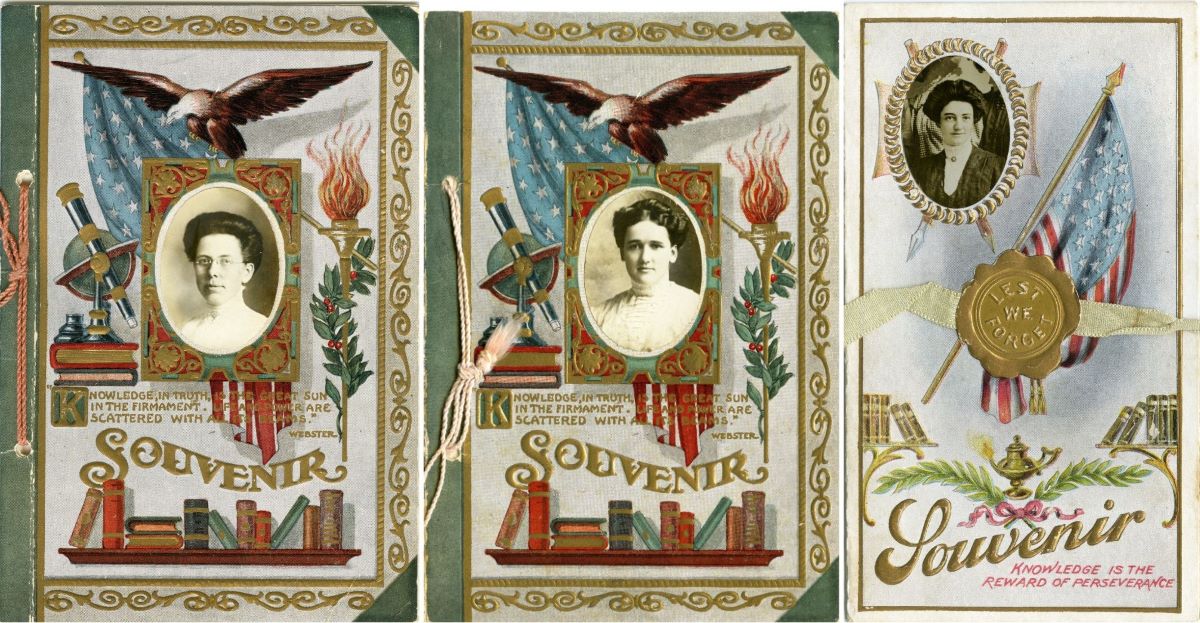
Pearl’s next teaching assignment was at the Brimley School (Garfield & Brimley Road) from 1912-1913. Her pay was slightly raised to $40.00 a month and she worked alongside another teacher, Fred Bailey. Brimley was a two-room schoolhouse, one for primary and the other for grammar grades.11
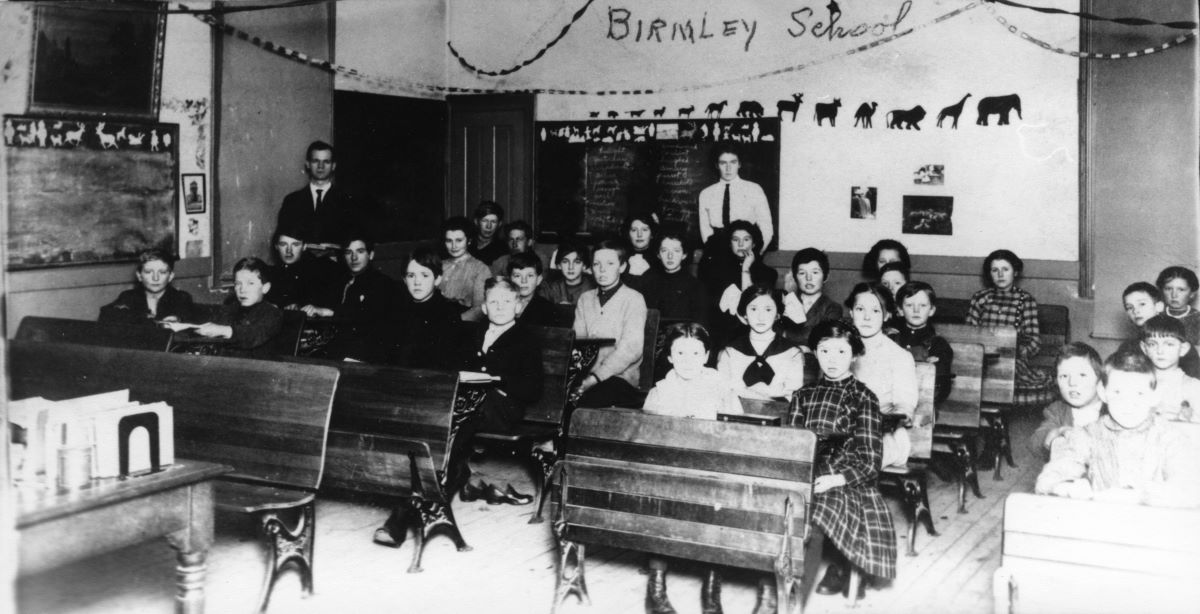
Her coworker, Fred Bailey was responsible for the grammar pupils, while Pearl, entering her second year of teaching, handled the younger students. Unlike at the Rice School, the custodial work of the school was handled by someone else, so Pearl no longer had to tidy the room or tend to the furnace.12
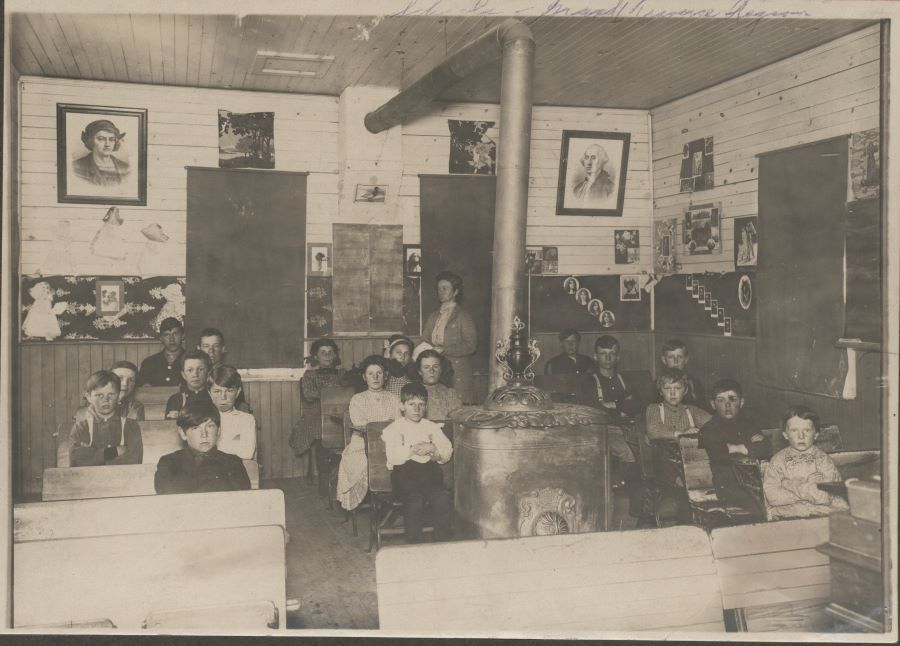
https://localhistory.tadl.org/items/show/1646.
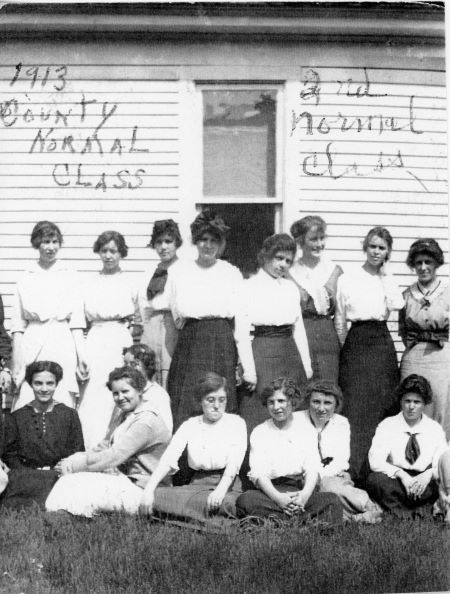
The next step to securing a more permanent teaching certificate for Pearl was to attend the County Normal School, a school dedicated to training teachers for elementary grades. Thus, after teaching for 16 months, Pearl Buell enrolled at the Grand Traverse County Normal School in September 1913. While past normal school students attended their classes at the Needham Business School in downtown Traverse City, Pearl’s class was the first to be held at the Oak Park Schoolhouse.13 At the Normal School, Pearl learned how to write lesson plans and classroom management as part of the curriculum. These practiced lesson plans are likely recorded in Pearl’s “Traverse City High School Special Notebook,” dated to 1913-1914.14
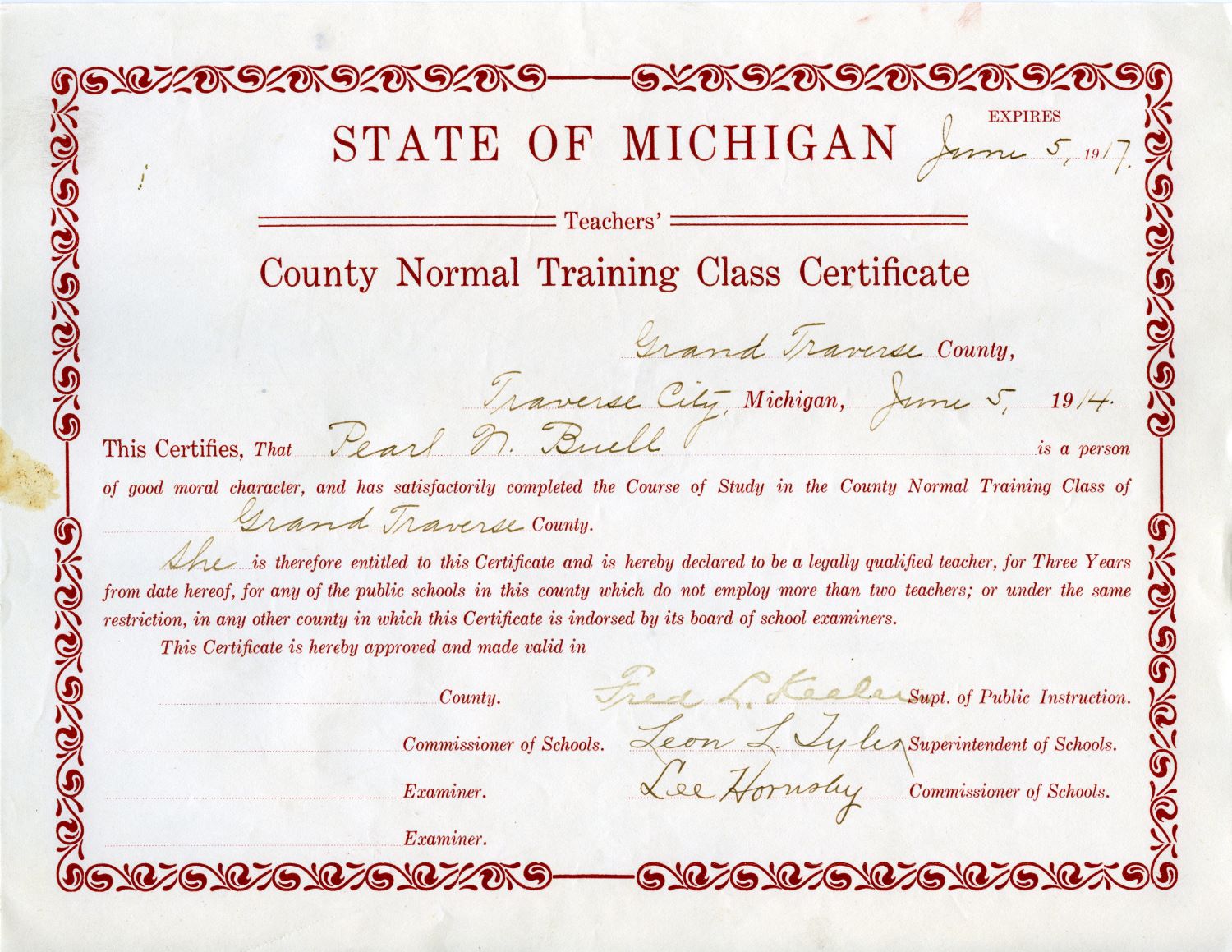
In June 1914, Pearl graduated and was awarded a teaching certificate for the county of Grand Traverse along with 16 of other graduates.15 At the time, in 1914, 75% of teachers in Grand Traverse County had “some normal training.”16
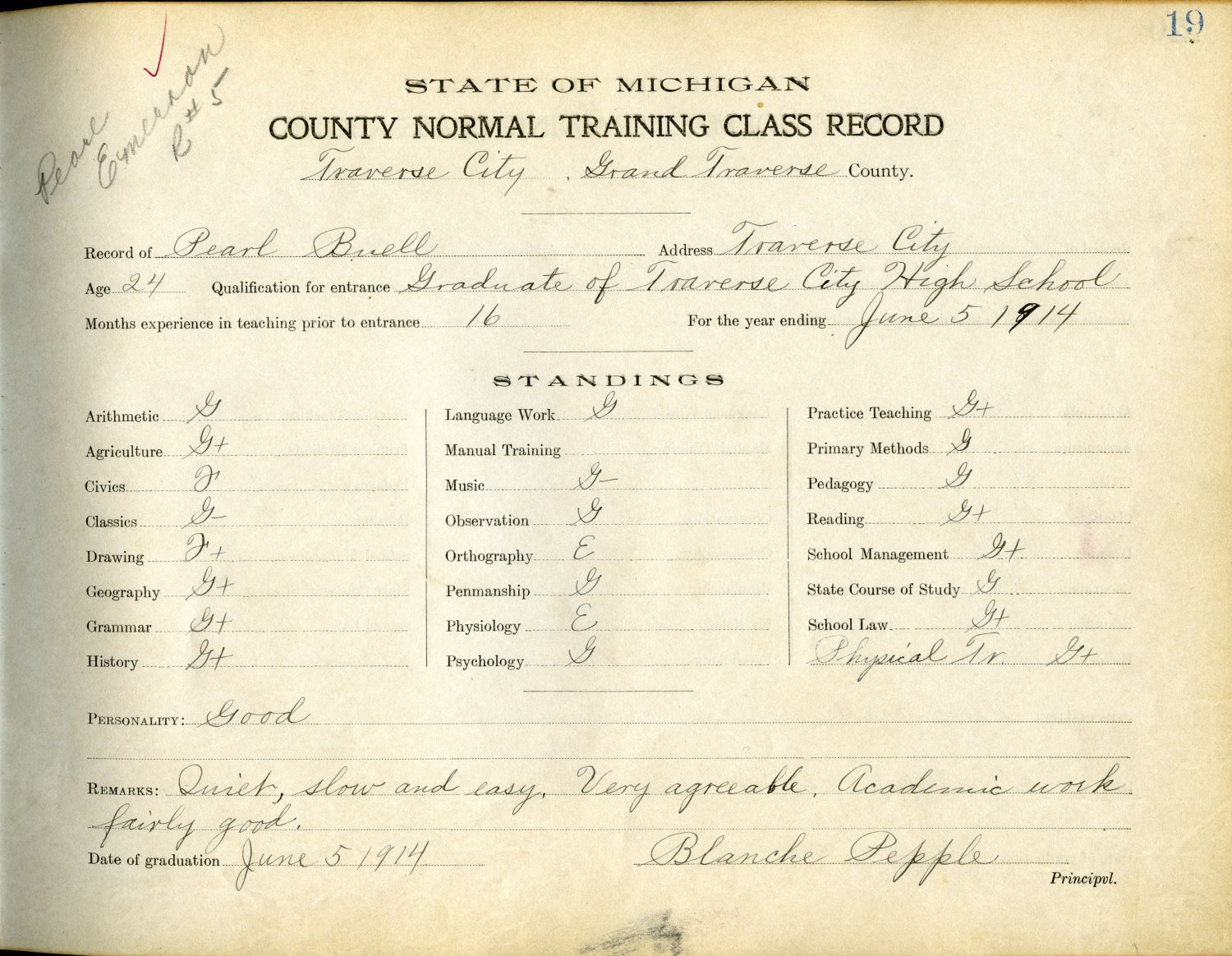
At the Normal School, her principal was Blanche Pepple, who was responsible for evaluating the Normal School students, recording students’ final grades, making a note about their personality, and remarks about each student. Pearl is described as having a “Good” personality" and was "quiet, slow and easy, Very Agreeable. Academic work fairly good grade.”17
Pepple’s and succeeding principals were often critical about of graduates’ appearance. While some remarks were overwhelmingly positive, like that of Pearl’s, other comments illustrate the societal expectations of young women of the time. Pepple, in particular, upheld these standards and integrated them into the evaluation of the students, whose appearances were regarded as paramount and sometimes secondary to the student’s academic merit.
Rose Fifarek, a graduate Traverse City High School, graduated Normal School in 1914, Pepple criticized both personality and presentation, “Personality not good. Inclined to be careless in dressing hair.”18 For Mamie Robertson, graduate Traverse City High School, age 18, Pepple wrote, “Personality: Good. Has breaking out on face that detracts from personal appearance.” Otherwise, Pepple remarks: “A bright girl, did very good work, but has indication of being antagonistic that may effect discipline.”19
Pepple wrote in evaluation of Hattie Ainslee, who, graduated from the normal school in 1914, “Personality: Very good. Neat in dress,” and for remarks she wrote, “Remarks: Did excellent teaching and very good academic work. Original. Determined. Has a will of her own.”20 Hattie’s evaluation contrasts with the more negative comments about physical appearances made by Pepple, but still underscores the importance of appearance for success as a school teacher in the eyes of the principal.
Other remarks often highlight the gender roles upheld by the school officials. The most poignant example is of 19-year-old Janet Morrison, whose personality was “Fairly good. Rather Boisterous” and had good academic work. However, Pepple remarked that Janet had a “bad habit that will interfere with her teaching – a bad tongue, used thoughtlessly.”21
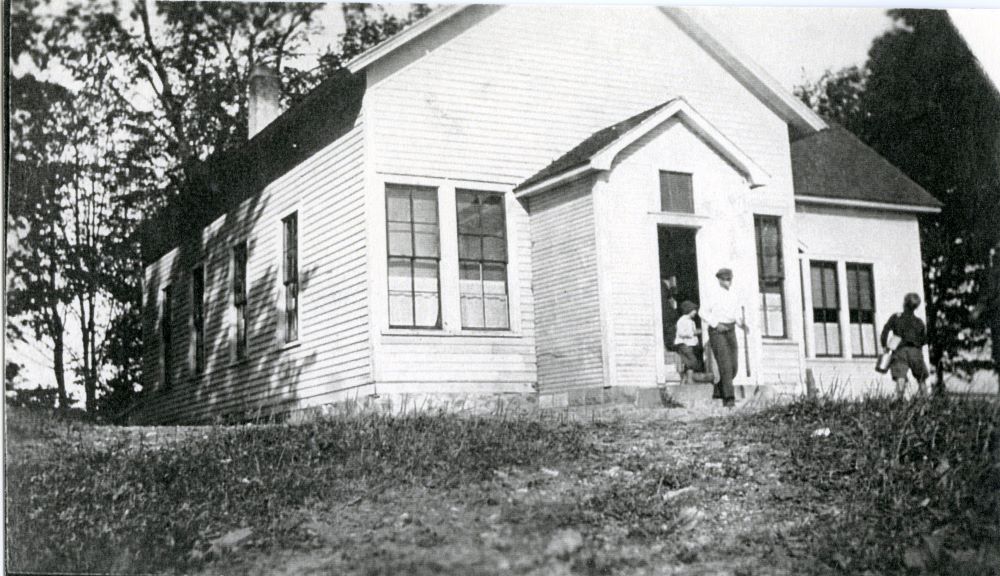
After graduating Pearl went to teach at the Lone Tree School on Harris Road for two years (1914-1916). For the first year at Lone Tree 1914-1915, she earned $40.00 per month and she taught the primary room and another teacher, Mr. Masters, taught the grammar room.22 The next year, Lone Tree she earned $5.00 more per month and taught only Kindergarten through third grade.23
Pearl married in 1916, and her known teaching career ended, as was the case for many young women’s teaching career.24 After 1916, Pearl Buell became Pearl Emerson and her occupation became “none” by the 1920 United States Federal Census.25
After Buell, Traverse City and the state of Michigan continued to improve and organize school districts, establishing school sanitary practices, and worked at standardizing teaching practices and curriculum. Comparing the one room schoolhouses and the secondary schools of Pearl's life, where she worked at and attended to the schools, to the schools of today --it is clear that education has evolved. At the present, over one hundred years after Pearl’s first day teaching, a new school year begins. Students soon file into clean, heated, and organized school buildings to their classrooms and their teachers, who begin the school year with their degrees and experience in hand.
[1] 1910 United States Federal Census, April 29, 1910, Sheet 9B, Ancestry.com; “Gunton School in Garfield Township,” TADL Local History Collection, accessed August 26, 2024, https://localhistory.tadl.org/items/show/19230; “Written by Grandma Emerson,” TADL Local History Collection.
[2] “Three Pupils Neither Absent or Tardy During October,” Traverse City Evening Record, November 17, 1904, Newspaper Archive.
[3] “Three Pupils Neither Absent or Tardy During October,” Traverse City Evening Record, November 17, 1904, Newspaper Archive.
[4] “Gunton School Report: Two Scholars Were Neither Absent or Tardy,” Traverse City Evening Record, May 2, 1905, 1, Newspaper Archives.
[5] “Normal School Course of Study,” TADL Local History Collection; “Souvenir,” TADL Local History Collection.
[6] Daniel Putnam, The development of primary and secondary public education in Michigan. A historical sketch. (Ann Arbor, Mich., G. Wahr, 1904), https://www.loc.gov/item/04035759/.
[7] “Fifty-two applicants,” Traverse City Record Eagle, June 15, 1911, 3, Newspaper Archive.
[8] “Notice of Teachers Examination,” Grand Traverse Herald, August 8, 1911, 4, Newspaper Archive.
[9] “Written by Grandma Emerson,” TADL Local History Collection.
[10] “Souvenir,” TADL Local History Collection.
[11] Grammar class here likely refers to the older students, likely those 10 or older. While primary would be children from ages 5 to 10.
[12] “Written by Grandma Emerson,” TADL Local History Collection.
[13] “The Needham Business School Summer Normal Class of 1907,” TADL Local History Collection, accessed August 24, 2024, https://localhistory.tadl.org/items/show/12907; “Written by Grandma Emerson,” TADL Local History Collection.
[14] One lesson plan, designed for the 7th grade was about “gaining information,” through “stories of chivalry, its customs and dress.” “Traverse City High School Special Notebook,” TADL Local History Collection.
[15] “Grand Traverse County, Normal Training Class Normal School Register, 1913-1923,” TADL Local History Collection, page 19.
[16] “Report of the Superintendent of Public Instruction 1915,” Digital General Collection University of Michigan Library Digital Collection, 21, accessed August 24, 2024, https://name.umdl.umich.edu/0549828.1915.001.
[17] “Grand Traverse County, Normal Training Class Normal School Register, 1913-1923,” TADL Local History Collection, page 19.
[18] “Grand Traverse County, Normal Training Class Normal School Register, 1913-1923,” TADL Local History Collection, page 21.
[19] “Grand Traverse County, Normal Training Class Normal School Register, 1913-1923,” TADL Local History Collection, page 27.
[20] “Grand Traverse County, Normal Training Class Normal School Register, 1913-1923,” TADL Local History Collection, page 17.
[21] “Grand Traverse County, Normal Training Class Normal School Register, 1913-1923,” TADL Local History Collection, page 45.
[22] “Written by Grandma Emerson,” TADL Local History Collection.
[23] “Written by Grandma Emerson,” TADL Local History Collection.
[24] Michigan, U.S., Marriage Records, 1916 Genesee-Kalkaska, Ancestry.com, accessed August 26, 2024.
[25] 1920 United States Federal Census, Sheet 2A, January 8-13, 1920, Ancestry.com.